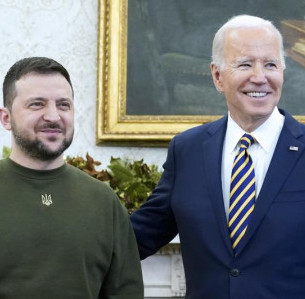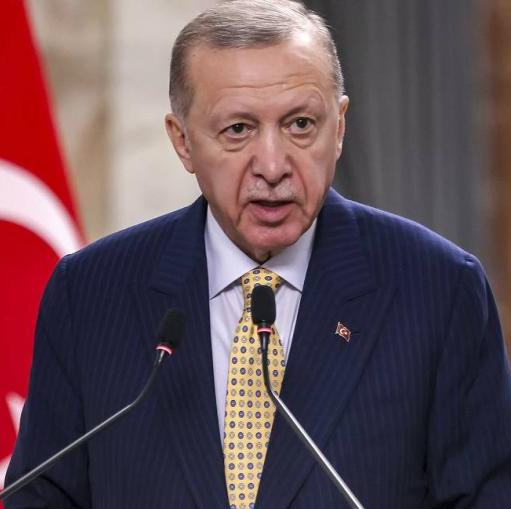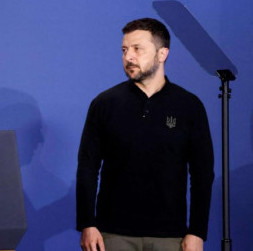
© AP Photo/Jean-Francois Badias/TASS
The countries of Eastern Europe (Poland, Slovakia, Czech Republic and Hungary) have been experiencing huge financial problems over the past few years — their budgets have been deficit-ridden since 2020, with things getting increasingly worse. Thus, Hungary's budget deficit reached 4.9% of GDP ($7.21 billion) in 2022, Poland’s — 4.4%, the Czech Republic’s — 4.3%, Slovakia’s — 2%. The deteriorating financial environment of these countries was partially brought about "the conflict in Ukraine, which dealt a double hit to their budget deficits — in both revenues and expenditures," as analyst Daniel Wood with the William Blair International investment company put it.
The governments of Poland, the Czech Republic and Slovakia, which follow in the wake of Western anti-Russian policy, and Hungary in its rear guard, had to significantly raise spending. Their extra charges are primarily linked to assisting Ukraine militarily. According to foreign sources, in early 2023 such "assistance" cost Poland $6.5 billion (3rd place after the US and Great Britain), the Czech Republic $2.1 billion (8th place), Slovakia over $1 billion. (Hungary has so far limited itself to rehabilitation support of those injured in combat, and non-military personnel training).
Moreover, the region is facing indirect consequences of EU anti-Russian sanctions-induced military conflict (waiver of energy carriers, metals, etc.), which led to double-digit inflation in most of these countries. Thus, in Poland the figure reached 18.3%, while in Hungary it exceeded 25% (making Viktor Orban's government hold on to energy ties with Russia to avoid a crisis that will otherwise immediately hit the Hungarian economy). Higher energy costs have entailed spending increases for both the population and the real sector, causing extra money being spent on industry and households. Thus, according to Hungarian Prime Minister Viktor Orban, his country loses an additional 10 billion euros annually.
The third significant inflation factor in Eastern Europe has been costs associated with Ukrainian refugees. And finally, there is an increase in spending on army modernization, with the highest figures fixed in Poland — by 11%.
The formation of budgets revenues has been affected by growing energy tariffs and raw material prices with a subsequent decline in industrial profitability, as well as suspension of quotas and duties on Ukrainian supplies to the Eastern European market as part of support for that country. Farmers are reluctant to Ukrainian agricultural raw materials that have flooded into their markets, since this may cause destruction of their own farms. Expert estimates suggest that farmers from Poland, Romania, Hungary, Bulgaria and Slovakia have lost 417 million euros of income.
Notably, all these countries have been receiving huge subsidies from the pan-European budget since joining the EU. Thus, 2022 saw Poland get 11.2 billion euros, Hungary — 5 billion, the Czech Republic — 2.1 billion, Slovakia — 1.6 billion. While prior to the Ukrainian-Russian conflict these funds were enough "to make ends meet," this is no longer the case for the time being.
To reduce budget deficits, the Eastern European governments embarked upon austerity measures. On May 11, Czech Prime Minister Petr Fiala announced a relevant package, most of which to be provided through reducing subsidies. In particular, the government will cancel 22 tax breaks, introduce two increased VAT rates instead of the current three, as well as higher excise duties on alcohol and tobacco. A number of taxes will be up, including those on property, winnings and activities of business owners. So far, these measures have yielded no tangible results, and only worsened people’s sentiment.
As it is, Eastern European governments are forced to actively use international debt markets, in which they are now leaders as regards selling government liabilities. So, the first quarter of 2023 witnessed them borrow $32 billion globally, which is thrice as much against last year. As a result, Poland’s public debt increased by $9 billion, Romania’s — by $6 billion, Hungary’s — by $5 billion, and Slovakia’s — by $4 billion.
In order to draw customers, their financial authorities had to increase coupon bond yields, making them a lot higher than the average for developing countries (1.4%), according to Bloomberg. In Hungary and Poland, it accounts for 4.1% and 2.4% respectively.
Moreover, the pivot to foreign debt markets has coincided with their economies being shattered by inflation. This has already entailed growth of "local" interest rates to higher levels than in the US or Western Europe. In Poland, the region’s largest economy, the yield on 10-year bonds reached 6%, which is four times higher than it was two years ago. As a result, its dollar-denominated bonds are currently trading at yields similar to those of the Philippines, Indonesia or Uruguay, which were previously considered far riskier.
According to Bloomberg-interviewed analysts, if the Ukraine war is here to stay, Eastern European countries will further suffer from increased budget deficits. According to Nafez Zuka with the London-based Aviva Investors, the Eastern European demand for money will remain high, compelling governments to proceed with their active borrowing policy.
After central banks have raised interest rates worldwide, borrowing on them is getting increasingly expensive. Poland is already paying 5.5% per annum on the new 30-year bonds, as compared to 4% in 2021. This indicates the likely formation of a "debt trap effect", with the newly created debts to be repaid by Eastern European countries at a much higher rate than before, which will be a real challenge in the face of lacking economic growth prospects.
The key hope is financial assistance. Eastern European politicians incidentally raise the issue of a required EU support expansion. But so far, their problems are only becoming an additional friction factor within the Union. The donor countries (Germany, France, etc.) have no stomach for compensating for their extra charges because of existential issues of their own.
The only option to promptly breaking the cycle is the ascent of pragmatic leaders to power, focused on national, not American interests.









